Regal Resplendence: Fabergé Eggs Redefining Opulence
The Fabergé eggs produced in the late 19th and early 20th centuries were commissioned as unique, ornately decorated gifts with discreet secret meanings by the Russian aristocracy.
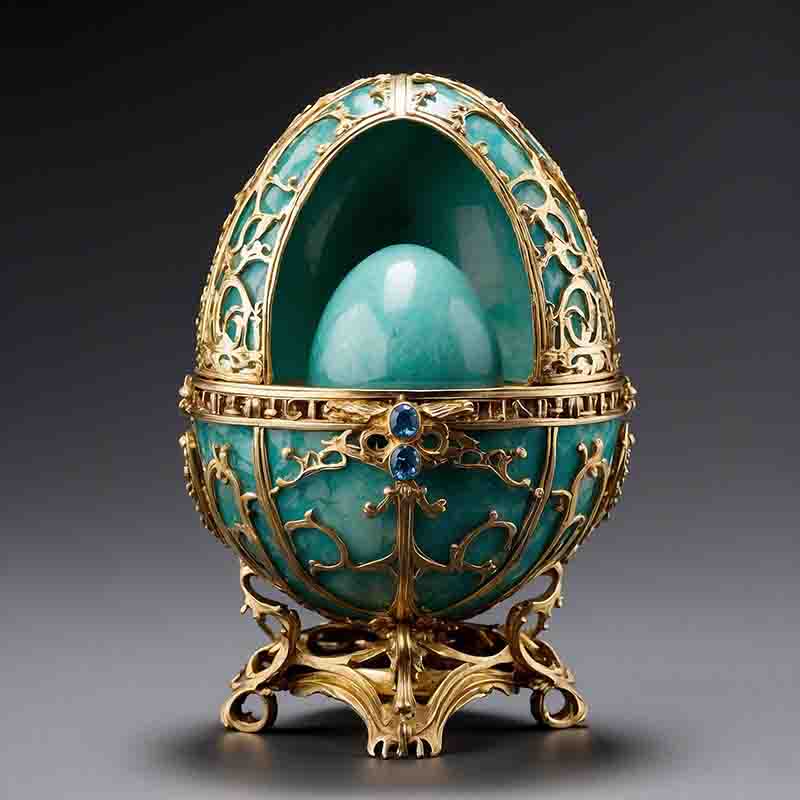
Fabergé eggs represent the pinnacle of luxury and artistic skill, characterized by intricate designs, meticulous attention to detail, and the use of precious materials.
Each Fabergé egg unfolds to reveal a surprise, showcasing the technical brilliance and creativity synonymous with Fabergé.
The eggs stand as Russian icons of opulence and innovation in the realm of decorative arts, capturing the essence of a bygone era with their historical significance and unparalleled craftsmanship.
These exceptional creations, dating from the late 19th to the early 20th centuries, stand as testament to the era's dedication to aesthetic brilliance and royal patronage.
Commissioned predominantly as lavish gifts for the Russian imperial family, each Fabergé Egg is a testament to the meticulous skill and creativity intrinsic to Fabergé's workshops.
After the Russian Revolution of 1917, the House of Fabergé was nationalized and its workshops were closed.
In 1924, the Kremlin Museum acquired a large collection of Fabergé eggs that had belonged to the Imperial family.
In the 1990s, after the collapse of the Soviet Union, interest in Fabergé eggs began to revive.
Fabergé eggs are more than just magnificent Easter gifts: they are shimmering works of art that bear witness to imperial power and exert an unbroken fascination on the art market.
Fabergé Eggs 🥚 Creating Exquisite Eggs 💎 (21st Century Edition)
Discover the intricate artistry and rich history behind Fabergé eggs, the most iconic pieces of jewelry ever created.
✅ Subscribe and become a channel member:
The Exquisite World of Fabergé Eggs
In this world of high stakes and discerning eyes, art dealers act as the bridge between these precious objects and their passionate art collectors.
Beyond their undeniable beauty lies a fascinating story intertwined with the price of art and the very definition of luxury value.
The Fabergé eggs are characterized by their intricate designs, utilizing a myriad of precious materials such as gold, enamel, diamonds, and gemstones.
The ingenious craftsmanship goes beyond mere visual appeal, with many of these eggs featuring hidden surprises or functional elements, elevating them beyond mere decorative pieces.
The demand for Fabergé Eggs in the market, driven by collectors, investors, and institutions, influences their monetary worth. High demand, especially for specific designs or periods, can lead to increased auction prices and private sales.
The historical significance of Fabergé Eggs is deeply entwined with the imperial court, as they were presented during Easter as an expression of love and celebration.
These timeless masterpieces offer a gripping insight into a bygone era of elegance and extravagance.
The lasting legacy of Fabergé eggs is not only in their beauty, but also in the role they played in preserving the cultural and artistic heritage of Imperial Russia.
The Fabergé Egg Collection
The history of Fabergé Eggs is a captivating tale of imperial opulence, artistic ingenuity, and enduring craftsmanship.
In the modern era, Fabergé Eggs continue to captivate the art world.
Collectors, museums and enthusiasts appreciate these masterpieces, which demonstrate the ongoing attraction of Fabergé's creations.
| Year | Fabergé Egg | Description |
|---|---|---|
| 1885 | Hen with Sapphire Pendant | The inaugural Fabergé Egg, a delicate hen with a sapphire pendant hidden within. |
| 1886 | Hen Egg | A more intricate version of the first egg, featuring a diamond-studded hen and a surprise inside. |
| 1887 | Blue Serpent Clock | A clock-shaped egg with a coiled blue serpent, showcasing early experimentation with design. |
| 1888 | Cherub with Chariot | An egg adorned with a cherub pushing a chariot, showcasing Fabergé's evolving artistic style. |
| 1889 | Necessaire Egg | A practical egg with a surprise inside, featuring a miniature necessaire (sewing kit). |
| 1890 | Danish Palaces Egg | Commemorating Tsarina Maria Feodorovna's Danish heritage, with detailed palace miniatures. |
| 1891 | Memory of Azov Egg | A naval-themed egg, featuring a model of a battleship and other maritime elements. |
| 1892 | Diamond Trellis Egg | Adorned with diamonds and featuring a delicate trellis pattern, showcasing opulent design. |
| 1893 | Caucasus Egg | An egg with intricate enamelwork depicting scenes from the Caucasus region. |
| 1894 | Renaissance Egg | An early masterpiece, featuring Renaissance-inspired design elements and detailing. |
| 1895 | Rosebud Egg | A charming egg with a surprise rosebud hidden within, symbolizing new beginnings. |
| 1896 | Alexander III Portraits Egg | Commemorating Tsar Alexander III, featuring portraits of the late tsar and his family. |
| 1897 | Coronation Egg | Celebrating Tsar Nicholas II's coronation, adorned with vibrant enamel and a miniature coach. |
| 1898 | Lilies of the Valley Egg | A tribute to Empress Alexandra, featuring lilies of the valley and a heart-shaped surprise. |
| 1899 | Bouquet of Lilies Clock Egg | Combining a clock and delicate lilies, showcasing the fusion of functionality and artistry. |
| 1900 | Cockerel Egg | Celebrating the turn of the century, featuring a golden cockerel as a symbol of good fortune. |
| 1901 | Gatchina Palace Egg | Commissioned by Nicholas II, featuring a detailed replica of the Gatchina Palace. |
| 1902 | Empire Nephrite Egg | Inspired by neoclassical design, featuring nephrite panels and gold detailing. |
| 1903 | Royal Danish Egg | A gift to Queen Alexandra, featuring Danish royal symbols and a surprise miniature of the queen. |
| 1904 | No Eggs Produced | Due to the Russo-Japanese War, Fabergé did not produce any eggs this year. |
| 1905 | Red Cross with Triptych | A philanthropic egg, featuring the Red Cross symbol and a triptych of miniature paintings. |
| 1906 | Moscow Kremlin Egg | Inspired by Moscow's iconic Kremlin, featuring a detailed model and a surprise carriage. |
| 1907 | Rose Trellis Egg | Commissioned by Nicholas II, adorned with rose-cut diamonds and intricate trellis patterns. |
| 1908 | Alexander Palace Egg | Commemorating the new Alexander Palace, featuring a detailed replica of the palace. |
| 1909 | Alexander III Commemorative Egg | Dedicated to Tsar Alexander III, featuring portraits and symbols associated with the late tsar. |
| 1910 | Colonnade Egg | A neoclassical design featuring a colonnade of columns and a rotating model of the Standart yacht. |
| 1911 | Bay Tree Egg | Inspired by nature, taking the form of a bay tree with a mechanical singing bird as a surprise. |
| 1912 | Napoleonic Egg | Commemorating the centenary of the Russian victory over Napoleon, depicting key events. |
| 1913 | Tercentenary Egg | Celebrating the 300th anniversary of the Romanov dynasty, featuring portraits and a diamond-studded double-headed eagle. |
| 1914 | Mosaic Egg | Created during World War I, featuring a mosaic pattern and an intricate surprise inside. |
| 1915 | Red Cross Egg | Another philanthropic egg, featuring the Red Cross symbol and a heart-shaped surprise. |
| 1916 | Order of St. George Egg | Created during World War I, featuring a portrait of Nicholas II and the Order of St. George. |
| 1916 | Steel Military Egg | Another war-era creation, with steel-gray enamel and diamond-studded military insignia. |
| 1917 | Karelian Birch Egg | The final imperial egg, featuring Karelian birchwood panels and an uncompleted surprise. |
This timeline outlines the key Fabergé Eggs created by the House of Fabergé, highlighting their historical context and unique designs.
Imperial Grandeur: Fabergé Eggs, Icons of Russian Royalty
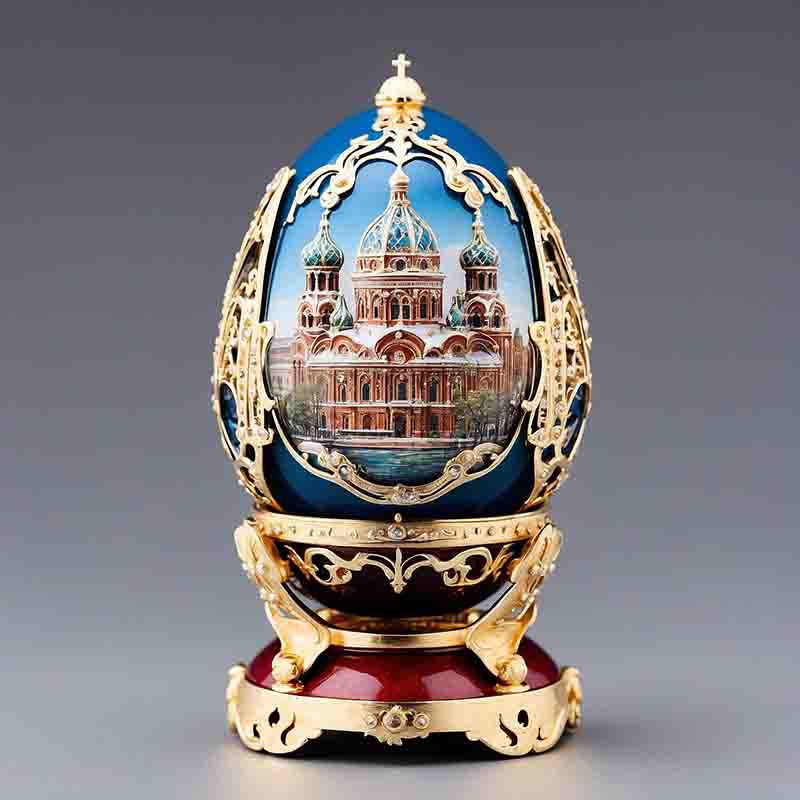
Today, these eggs are revered as iconic symbols of the pinnacle of decorative arts, encapsulating the spirit of a golden age and the unparalleled craftsmanship of the House of Fabergé.
Jewels of the Tsars: Fabergé Eggs
Fabergé Easter eggs are precious masterworks intricately crafted by the renowned house of Fabergé, marking a legacy of luxury and artistic brilliance.
These miniature treasures, born from the skilled hands of Fabergé craftsmen, transcend mere ornamental objects, embodying a rich history and cultural significance that spans centuries.
Historical Timeline of Fabergé Eggs
The House of Fabergé embarked on its journey of crafting Imperial Easter Eggs in 1885, with the creation of the Hen with Sapphire Pendant Egg.
This marked the beginning of a series that would become synonymous with the Russian imperial family.
The Imperial Collection, spanning from 1897 to 1916, witnessed the production of iconic eggs like the Coronation Egg and the Resurrection Egg, each carrying profound historical and cultural narratives.
Post the Russian Revolution, the landscape of Fabergé Eggs changed, yet the House continued its creations into the 2010s, contributing to a legacy that transcended political upheavals.
Artistic Patterns and Styles of Fabergé Eggs
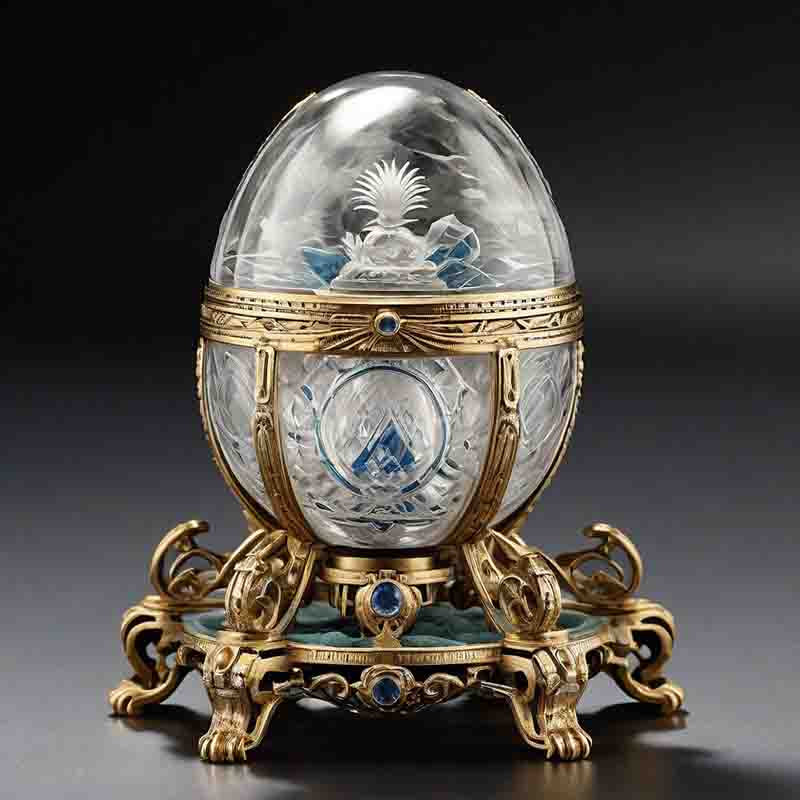
The Fabergé eggs have become storytelling projections that are expressed through intricate elements and use of symbolism.
The evolution of Fabergé Egg designs reflects a captivating interplay between classic, avant-garde, and contemporary styles.
Early creations in the late 19th century embraced traditional Russian folklore, with classic patterns adorning eggs like the Rose Trellis Egg.
As the 20th century unfolded, the House delved into avant-garde designs, experimenting with modern artistic movements.
In the 21st century, contemporary artists draw inspiration from Fabergé Eggs, infusing fresh perspectives into their creations, thus bridging the gap between tradition and innovation.
Curated Assemblies and Series of Fabergé Eggs
The Imperial Easter Eggs series stands as the epitome of Fabergé craftsmanship.
Each egg within this curated assembly tells a unique story, with notable examples like the Lilies of the Valley Egg symbolizing renewal and the Winter Egg embracing the festive season.
Beyond the Imperial collection, special series such as the Renaissance Egg series showcase the House's ability to create thematic and cohesive sets, each egg contributing to a broader narrative of artistry.
Craftsmanship and Techniques
The creation of Fabergé Eggs is a testament to unparalleled skill and technique.
Craftsmen, often referred to as artists in their own right, poured their expertise into each egg.
The meticulous attention to detail, from guilloché enamel to gemstone settings, exemplifies the dedication to perfection.
Fabergé Eggs are not merely decorative; they are a manifestation of the highest level of craftsmanship achieved through years of refinement.
Precious Materials Used in Fabergé Eggs
Gold and enamel work together to form the intricate canvas upon which Fabergé craftsmen express their artistry.
The vibrant colors and textures of enamel, combined with the luster of gold, create a visual spectacle.
Diamonds and various gemstones, carefully chosen for their symbolism and brilliance, further elevate these eggs to unparalleled heights of luxury.
Monetary and Historical Worth of Fabergé Eggs
The value of Fabergé Eggs extends beyond the monetary realm, influenced by factors such as rarity, provenance, and craftsmanship.
The historical context in which these eggs were created plays a crucial role in determining their worth.
Notable auction sales, marked by competitive bidding, underscore the ongoing demand and appreciation for these miniature marvels in the collector's market.
Reproductions and Imitations
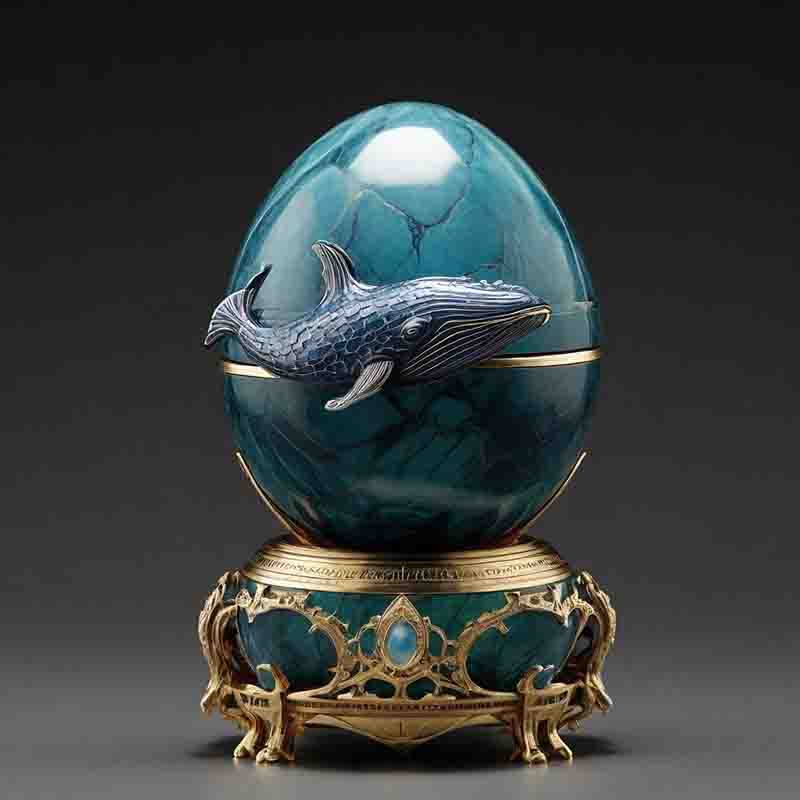
The fascination with Fabergé eggs has inspired contemporary jewelers and artists to create their own editions and tributes. Although these pieces are not originals, they are a homage to the iconic design and intricate craftsmanship of the House of Fabergé.
As Fabergé Eggs gained prominence, commercial reproductions emerged, often diluting the authenticity of the originals.
These imitations, created for commercial purposes, pose a challenge to distinguishing genuine Fabergé Eggs.
However, there are also homage creations, where contemporary artists pay tribute to the legacy of Fabergé Eggs, adding a layer of artistic appreciation to the market.
Fabergé Eggs Available for Purchase
The avenues for acquiring Fabergé Eggs range from auctions to authorized dealers and private sales.
Auctions, marked by competitive bidding, provide opportunities for collectors to vie for these rare treasures.
Authorized dealers and private sales offer a more discreet but equally legitimate route for enthusiasts to add a Fabergé Egg to their collection, emphasizing the importance of authenticity and provenance in the acquisition process.
Public Displays and Institutions Dedicated to Fabergé Eggs
Fabergé Eggs, being symbols of cultural and historical significance, find themselves displayed in museums and institutions globally.
These public displays offer a chance for audiences to appreciate the artistry and delve into the stories encapsulated within each egg.
Institutions dedicated to preserving and exhibiting Fabergé Eggs play a vital role in ensuring the continued legacy of these treasures.
Fabergé Eggs and the Russian Imperial Family
The connection between Fabergé Eggs and the Russian imperial family is deeply rooted in history.
These eggs were commissioned for and presented to members of the imperial court, reflecting both regality and historic connections.
The eggs commissioned for Tsar Nicholas II, in particular, stand as testaments to a bygone era of opulence and aristocracy.
Iconic and Recognizable Designs
Certain Fabergé Egg designs have become iconic emblems of the brand.
These standout pieces, such as the Imperial Coronation Egg and the Fabergé Apple Blossom Egg, embody the essence of Fabergé craftsmanship and are instantly recognizable, carrying the prestige associated with the House of Fabergé.
Concealed Elements and Symbolic Representations
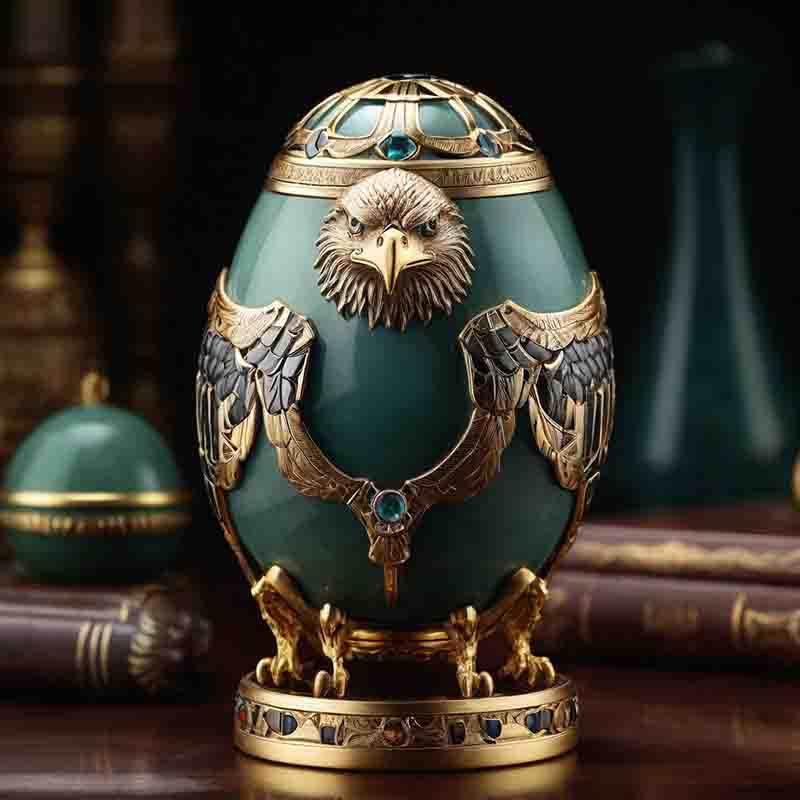
In later years, especially after the Russian Revolution, Fabergé Eggs began to showcase avant-garde influences, breaking away from traditional norms.
Intriguing and concealed elements within Fabergé Eggs add an extra layer of fascination.
Clever mechanisms or compartments, concealed from plain view, contribute to the mystique surrounding these treasures.
Symbolic representations within the designs delve into deeper meanings, weaving intricate narratives that extend beyond mere adornment.
Cultural, Historical, and Artistic Importance
Beyond their material value, Fabergé Eggs hold immense cultural, historical, and artistic importance.
These miniature masterpieces go beyond their role as luxurious ornaments and become windows into a past era.
Their significance lies in the stories they tell, the cultural heritage they embody, and the artistic brilliance they represent.
Commissioned Fabergé Eggs
Fabergé Eggs commissioned for specific purposes or individuals carry a unique narrative.
Whether created as diplomatic gifts or tokens of appreciation, commissioned Fabergé Eggs showcase the House's ability to tailor its artistry to diverse contexts and occasions, emphasizing the personal and bespoke nature of these creations.
Fabergé Eggs Presented to Royalty
Fabergé Eggs presented to royalty, especially those connected to imperial courts, exemplify the deep-rooted association between the House of Fabergé and regal figures.
Beyond their aesthetic appeal, these eggs served as diplomatic gestures, strengthening ties and symbolizing the prestige associated with both the House and the recipients.
Fabergé Eggs in Russian History
The role of Fabergé Eggs in Russian history is pivotal, reflecting the country's cultural and artistic heritage.
As symbols of luxury and craftsmanship, these eggs have become enduring icons, transcending political changes and socio-cultural shifts, and preserving a tangible link to Russia's imperial past.
Fabergé Eggs and Tsar Nicholas II
Tsar Nicholas II, the last Russian emperor, played a significant role as a patron of the House of Fabergé.
His commissions and ownership of Fabergé Eggs further solidified the brand's association with royalty.
The eggs linked to Tsar Nicholas II hold a unique place in Fabergé's history, embodying a time when craftsmanship flourished under imperial patronage.
House of Fabergé: Founder and Legacy
The House of Fabergé was founded by Peter Carl Fabergé in 1842.
A visionary jeweler and goldsmith, Fabergé transformed the landscape of luxury craftsmanship, establishing a legacy that continues to influence the world of jewelry and art.
His contributions extend beyond the creation of Fabergé Eggs, leaving an indelible mark on the entire realm of fine craftsmanship.
Jewels of the Tsars: Fabergé Eggs
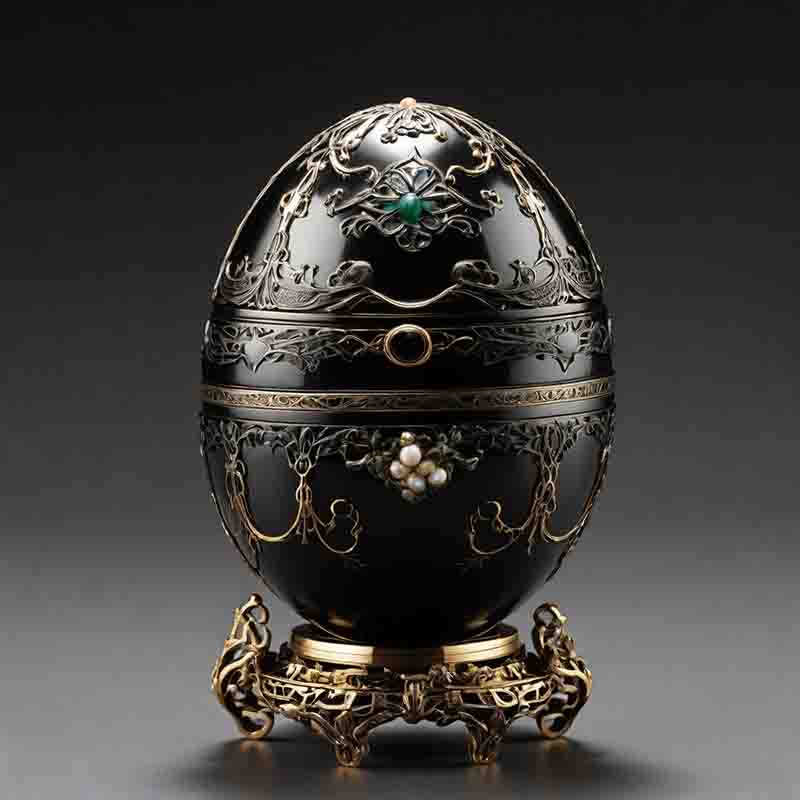
Fabergé Eggs showcased a fusion of styles, blending elements from different artistic movements to create unique and eclectic designs.
The House of Fabergé faced a dramatic turn of events with the Russian Revolution in 1917, leading to the closure of the firm.
Peter Carl Fabergé and his family fled Russia, marking the end of the illustrious House of Fabergé in its original form.
However, the legacy of Fabergé endured, and the firm's creations, particularly the Fabergé Eggs, continue to be celebrated as masterpieces of jewelry and decorative arts.
Fabergé Eggs: Luxury Sparks Intrigue
Fabergé Eggs trace their origins to the House of Fabergé, a prestigious Russian jewelry firm founded in 1842 by Peter Carl Fabergé.
The story of the eggs begins with Tsar Alexander III, who commissioned the first Imperial Easter Egg in 1885 as a gift for his wife, Empress Maria Feodorovna.
Fabergé Eggs hold immense significance in Russian history, representing the craftsmanship and luxury of the imperial court.
Fabergé eggs are enduring symbols of Russia's cultural heritage and the opulent era of the Romanov dynasty.
-
Fabergé: The House of Fabergé, founded by Peter Carl Fabergé in 1842, was a renowned Russian jewelry firm known for creating exceptional luxury items, including the famous Fabergé Eggs.
-
Imperial: The Fabergé Eggs were often commissioned as imperial gifts, presented to members of the Russian imperial family, making them symbols of royal patronage and luxury.
-
Goldsmith: Fabergé was a master goldsmith, and the use of gold in crafting the eggs added to their opulence and value.
-
Jeweler: The House of Fabergé was a distinguished jeweler, incorporating precious gemstones and intricate designs into their creations.
-
Craftsmanship: Fabergé Eggs are celebrated for their exceptional craftsmanship, showcasing meticulous attention to detail and technical brilliance.
-
Opulence: These eggs were designed to be extravagant and luxurious, featuring precious metals and gemstones to create pieces of exceptional opulence.
-
Russian: The origin of Fabergé Eggs lies in Russia, with the House of Fabergé becoming synonymous with Russian luxury and craftsmanship.
-
Artistry: Fabergé Eggs are true works of art, displaying unparalleled creativity and artistic skill in their design and execution.
-
Precious Materials: Fabergé Eggs often incorporated the finest materials, including gold, diamonds, enamel, and other precious gemstones.
-
Intricate Designs: The eggs are characterized by elaborate and intricate designs, showcasing the artistic vision and attention to detail of the craftsmen.
-
Easter: Many Fabergé Eggs were commissioned as Easter gifts, making them symbolic of religious and celebratory occasions.
-
Imperial Family: Fabergé Eggs were often commissioned by or presented to members of the Russian imperial family, adding to their historical significance.
-
Coronation Egg: One of the most famous Fabergé Eggs, the Imperial Coronation Egg, was created to commemorate the coronation of Tsar Nicholas II.
-
Winter Egg: Another notable example, the Winter Egg, is celebrated for its unique design and intricate detailing.
-
Masterpieces: Each Fabergé Egg is considered a masterpiece, reflecting the highest level of skill and creativity achieved by the House of Fabergé.
-
Hidden Surprises: Many Fabergé Eggs feature hidden compartments or surprises, adding an element of intrigue and functionality to their exquisite appearance.
-
Decorative Arts: Fabergé Eggs are iconic examples of the decorative arts, blending beauty and functionality in their design.
-
Cultural Heritage: These eggs play an important role in preserving the cultural heritage of Imperial Russia and reflect the values and aesthetics of a historical era.
-
Historical Significance: Fabergé Eggs hold historical significance as symbols of the Russian imperial court and the opulence of the early 20th century.
-
Iconic Symbols: Today, Fabergé Eggs are recognized as iconic symbols of luxury, craftsmanship, and artistic achievement, transcending their historical origins.
Fabergé Eggs, far more than mere ornaments, are gateways to a world where artistry meets history, and opulence intertwines with craftsmanship.
Imperial Treasures: Fabergé Eggs
Fabergé Eggs represent not just objects of beauty but tangible pieces of history and art.
Their journey from the late 19th century to the present day showcases a continuous evolution of style, technique, and cultural relevance.
Each egg, a testament to the House of Fabergé's enduring legacy, carries within it stories of imperial grandeur, artistic innovation, and the timeless allure of exquisite craftsmanship.
As these miniature masterpieces continue to be coveted by collectors and showcased in museums, their impact on the cultural and historical tapestry remains indelible.
Fabergé Eggs: FAQ
Are you curious about music, art, technology, fashion, lifestyle, and beer?
If so, then you need to subscribe to the free Likewolf newsletter.
100% privacy. When you sign up, we'll keep you posted.
Ah, That Clears Things Up!
Every Bottle Whispers A Story
